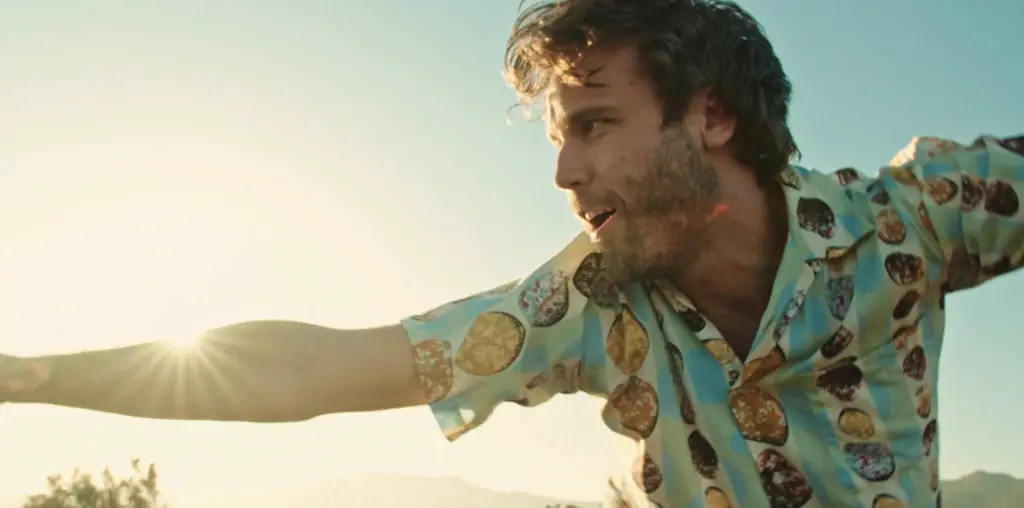
In October 1999, filmmaker Nicholas Triandafyllidis decided to make the first-ever documentary on legendary rocker Screamin’ Jay Hawkins during his concert tour of Greece. The extensive interviews with Hawkins and his raucous concert in Athens recorded on this trip turned to be the last chance he would have to capture the singer on film, as Hawkins would suddenly die of heart failure four months later in Paris.
The resulting film, “Screamin’ Jay Hawkins: I Put a Spell on Me,” is an excellent elegy to a musical artist who had a tremendous influence on the history of rock music but was long underappreciated by both the music industry and the general public. Hawkins, who is best known for the 1956 classic “I Put a Spell on You,” was both an extraordinary performer and a peerless raconteur and his talents are brilliantly presented to their fullest here.
As a performer in the early days of rock n’roll, Hawkins brought a
distinct sense of camp to his stage presence. Calling upon the stereotypes of African and Caribbean voodoo witch doctors, Hawkins would enter the stage in a coffin and emerge wearing a zebra skin cape, sporting what appeared to be a bone through his nose, and waving rubber snakes and a long stick with a skull impaled through its midsection (the skull was dubbed “Henry” as was fed cigarettes during the performance). With wildly rolling eyes and a
voice of apocalyptic gravity, Hawkins was clearly an assault against the complacency and blandness of 1950s American culture (many radio stations banned his music because of his outrageous persona) and he clearly served as an inspiration for over-the-top rockers ranging from Alice Cooper to Marilyn Manson.
Unfortunately, many factors prevented Hawkins from enjoying continued
mainstream success. While “I Put a Spell on You” was a monster hit
that sold 18 million records and was covered by many artists, Hawkins was cheated out of royalties by a corrupt record industry (he claimed his attempts to collect his money were met with threats of a mobster rubout). None of his subsequent recordings ever matched the popularity of his first hit, and the eccentricities of his personality (multiple and often violent marriages
and a heavy sense of paranoia) antagonized many influential people. While European audiences never wavered in their enthusiasm for his talent, American audiences virtually wrote him off by the early 1960s. Rediscovery in his own country never truly came about, and by the 1980s he was reduced to playing in third-rate New York bars to audiences who never heard of him.
In watching “Screamin’ Jay Hawkins: I Put a Spell on Me,” it is difficult to understand why Hawkins was so poorly treated. His concerts are a source of wonder: shown here at the age of 70, he had the vocal and physical presence of a man half his years and enough energy to fuel a power plant.
Hawkins’ music covered the worlds of rock, R&B and jazz, and he brushed his audiences with a wonderfully bawdy sense of humor (especially in the song “Constipation
Blues,” with its uncomfortably funny sound effects) and a happy
stubbornness in taking himself seriously. His final Athens concert is a riot of good times and good humor, and in some ways it is too bad this could not be a straightforward concert film.
Off the stage, however, Hawkins shouldered more than his share of
problems. Born to an unwed mother who dropped him off at an orphanage, Hawkins was raised by a Blackfoot Indian family and never knew his real parents. In the film, he talks calmly about horrific World War II experiences as a brutally tortured prisoner of war by the Japanese, and then caps the story with his equally brutal revenge once he was liberated from captivity. While his music was championed by pioneering rock disk jockey Alan Freed, Hawkins found few
supporters (either white of black) in the music world to back his
talents; his negative and bitter comments here on Fats Domino and Sammy Davis Jr. may come as a surprise for those who idolize these performers. His inability to maintain a relationship once nearly proved fatal when one of his wives shot and stabbed him. Hawkins’ matrimonial woes were so great that he even lost count of his record; he claims he was married five times, but in recalling his adventures in marriage he realizes there was actually a sixth wife he forgot about.
“Screamin’ Jay Hawkins: I Put a Spell on Me” supplements the story with interviews including Jim Jarmusch, Bo Diddley and Eric Burdon. The interviews look as if they were filmed in a hurry (Jarmusch is filmed sitting on a bed in a tiny hotel room), but they offer a rich insight into
Hawkins’ quirks, failings and glories. Most memorable are dueling anecdotes between Hawkins and Jarmusch regarding the filming of a scene in “Mystery Train.” Jarmusch cast Hawkins in his film and in one scene Hawkins is called upon to snatch and devour a plum. Hawkins claims dramatically that he was required to do the scene in 30 takes, while Jarmusch matter-of-factly sighs that it
only took eight takes.
If “Screamin’ Jay Hawkins: I Put a Spell on Me” has a flaw, it comes in not providing a full account for long stretches of Hawkins’ life. His whereabouts in the mid-1960s through the early 1980s are barely touched upon and it is not clear what Hawkins was doing during this time. There are fleeting clues to this missing gap:producer/promoter Milan Melvin talks about having Hawkins in a California hotel room in 1969 (Hawkins booby-trapped the room, fearing unwanted intruders), but we never learn why he was in California at that time. Jarmusch mentions finding him living in a New Jersey trailer camp in the early 1980s, but Hawkins is never pressed to explain how he came to such an unlikely residence. Hawkins appeared in a 1977 biopic on Alan Freed’s life called “American Hot Wax,” but that is mentioned very briefly and no clip from the film is presented.
Yet in overlooking this void, however, there is still plenty to enjoy
in “Screamin’ Jay Hawkins: I Put a Spell on Me.” For those who never
experienced Hawkins in performance and for those who have been too long away from his charms, the film serves up a remarkable talent who defied convention and ultimately created a unique legend which lies waiting for deeper and wider appreciation.


